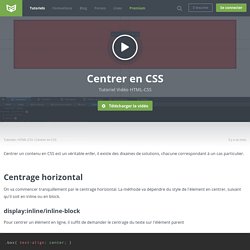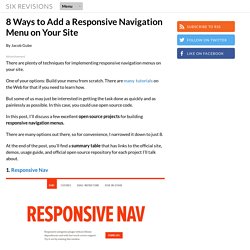

CSS & Sass Tita Créa. Pure CSS: Sticky Footer - Science and Society by Tomas Bagdanavičius. With this entry I want to start a new bunch of articles under the subtitle of „Pure CSS“.

Basically this means that I will be posting a number of articles dealing with web design issues and ways those issues can be solved in the most efficient and elegant way using CSS only! No JavaScript! Specifically in this article, titled “Sticky Footer”, I will give you a step by step guide on how to create css sticky footers at the bottom of the page. I know that there are other methods out there and this issue has attracted more attention recently, but this is what I use and in my view it’s cleaner and applicable to existing HTML structures and you won’t have trouble uploading it to your web hosting provider. It fulfills all main requirements of this type of solution: (a) it sticks at the bottom of the page only if all other content of the page does not occupy the full height of the page; (b) it works on IE5+, FF1+, Opera7+, Safari2+ and maybe even more; (c) and most importantly, it’s pure CSS.
Le guide complet pour centrer en css. Tutoriel Vidéo HTML-CSS Centrer en CSS. Centrer un contenu en CSS est un véritable enfer, il existe des dixaines de solutions, chacune correspondant à un cas particulier.

Centrage horizontal On va commencer tranquillement par le centrage horizontal. La méthode va dépendre du style de l'élement en centrer, suivant qu'il soit en inline ou en block. display:inline/inline-block Pour centrer un élément en ligne, il suffit de demander le centrage du texte sur l'élément parent display:block En revanche si votre élément est en display block il faudra alors mettre des marges automatique à l'élément. float:left Dans certains cas il est parfois nécessaire d'utiliser les float:left afin de placer les éléments les uns à côté des autres (pour un menu par exemple).
Centrage vertical Autant, centrer horizontalement un élément savère relativement aisé. Display:table Le centrage vertical existe bel est bien. Cette méthode fonctionne très bien mais nous force à créer un élément intermédiaire qui va servir de table-cell. position:absolute. Responsive web. Responsive Design. Se mettre au frontend en 2014, par où commencer ? Un de nos lecteurs nous a récemment envoyé un email avec tout un tas de questions; nous avons apprécié le geste et plutôt qu’uniquement lui répondre, nous souhaitions en faire profiter tout le monde.

Salut Putain de code ! , Salut :) Je viens d’être embauché en tant que Product Designer et il est prévu que je fasse du front. Malheureusement, pour diverses raisons, je n’ai plus pratiqué ce métier depuis au moins 1 an. Yes, pas de problème, dis-nous tout. Au niveau de mes besoins, il me faudrait, je pense, une solution fiable avec une première base de modules prédéfinis (même une version light) pour une question de rendement et d’optimisation du dev. Les frameworks comme Bootstrap ne sont pas forcément une mauvaise chose, ils te permettent de mettre les bases d’un site, très pratique pour aller vite et surtout faire des administrations. Avec une charte un peu custom, n’est-il pas préférable de se baser sur des composants pré-existants pour faciliter la charge et le temps passé à dev ?
Topcoat. 8 Ways to Add a Responsive Navigation Menu on Your Site. By Jacob Gube There are plenty of techniques for implementing responsive navigation menus on your site.

One of your options: Build your menu from scratch. There are many tutorials on the Web for that if you need to learn how. But some of us may just be interested in getting the task done as quickly and as painlessly as possible. In this case, you could use open source code. In this post, I’ll discuss a few excellent open source projects for building responsive navigation menus. There are many options out there, so for convenience, I narrowed it down to just 8.
At the end of the post, you’ll find a summary table that has links to the official site, demos, usage guide, and official open source repository for each project I’ll talk about. 1. This responsive navigation menu system is lightweight — less than 1KB when optimized.